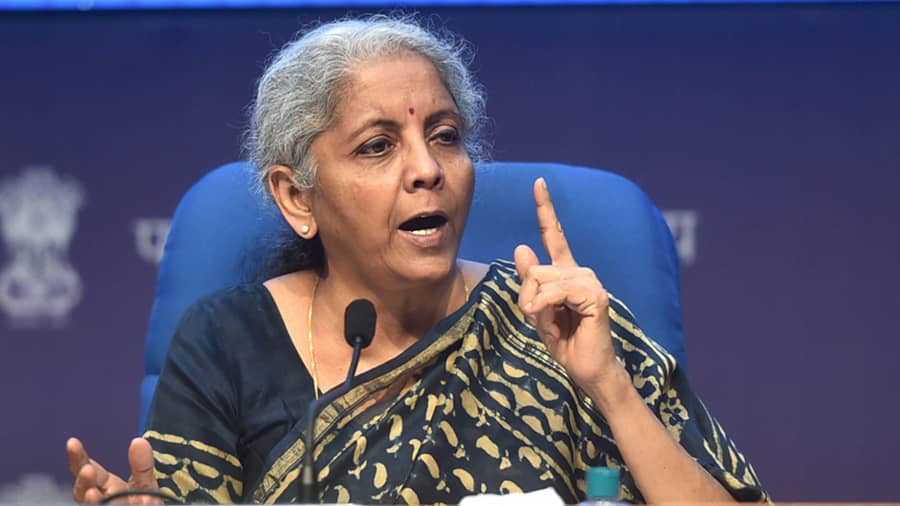‘Crypto’ has been one of the most searched words in India and the world over the past couple of years. At its peak, the global cryptocurrency daily trading volume hit a staggering high of $521 billion in April 2021 and the global market cap surged to an astronomical $3 trillion last November.
A year later, the story looks very different. The market cap has fallen to $1.1 trillion and the average daily volume to around $74 billion. In India, which accounts for 9 per cent of the crypto users in the world, the numbers are worse. The central government has levied heavy taxes on gains made by selling digital assets like non-fungible tokens (NFTs) and cryptocurrencies. Moreover, it has said that this move does not make cryptocurrencies legal. All this has only confused users and slowed down the skyrocketing Indian crypto market.
What exactly is crypto?

Cryptocurrency is made possible with the use of blockchain technology and decentralisation TT archives
Although not official currencies, cryptocurrencies are the decentralised digital currencies of the Internet. They are powered by the blockchain technology and secured by an encryption tool called cryptography. Therefore, a cryptocurrency is created with three elements — blockchain, decentralisation and cryptography. Blockchain is a digital ledger where the transactions of a cryptocurrency with regard to buying, selling and swapping or trading are noted and stored. It is decentralised, which means the information is available for everyone to view.
What is happening in India?
Until March 2022, crypto was seen as an unstoppable force in India. Crypto brands were relentlessly promoting themselves on TV and social media. But soon after the central government introduced the crypto taxes, there has been nothing but chaos in the market.
Coming on top of global macroeconomic developments like inflation, rising oil prices and the Ukraine-Russian war that were already affecting the crypto prices, the taxes proved a hammer blow. And it comes at a time when the finance ministry as well as the Reserve Bank of India are considering the possibility of banning all cryptocurrencies in India, not unlike what has happened in China.
How bad is the effect?

The Government of India has come down hard on crypto with its tax regulations TT archives
Under the new rules, investors have to pay a 30 per cent tax on any income earned from cryptos and NFTs, with no deductions or exemptions. Even if an investor loses money in crypto overall, they still have to pay the 30 per cent tax on whatever profit they made in individual transactions. Before the taxes, crypto was seen as an unregulated yet high-class asset with exponential returns. After the taxes, people are more sceptical than ever.
Reports from India’s top crypto exchanges indicate that the trading volume has fallen by 70 to 75 per cent over the last year. Numbers are believed to have dipped further after the new rule of 1 per cent TDS on transactions was implemented in July 2022.
Why are Web3/crypto startups leaving India?

The Binance and WazirX controversy has amplified the sense of uncertainty around crypto in India TT archives
Most Web3 or crypto startups prefer to serve a global audience because of the complex restrictions and regulations in India. Many, while still catering primarily to an Indian audience, register themselves abroad. For crypto startups moving out of India, the most popular destinations are Dubai, Singapore and the British Virgin Islands. Many Indian venture capital firms are also considering investing in companies registered outside India to reduce risk.
Why is the public losing faith in crypto?
First, it was the regulations that made trading crypto riskier than ever. Then, Vauld, a crypto lending platform, stopped withdrawals citing market conditions and a lack of liquidity, locking millions of users away from their own money. This led to a massive outage, with even the influencers who had promoted Vauld coming forward to apologise. As Indians were still coming to terms with Vauld sealing its vaults, the WazirX mess happened. The Enforcement Directorate accused WazirX, among India’s largest cryptocurrency exchanges, of helping fraudulent apps launder money on its platform. On top of this, Binance, which supposedly acquired WazirX in 2019, denied that the transaction ever happened, which a founder of WazirX has disputed. No wonder, crypto has started becoming synonymous with scams in the public imagination.
Is crypto still alive in India?

Crypto, while suffering a setback, still continues to be relevant in India TT archives
Despite the turmoil, crypto and Web3 are very much alive in India, as evidenced, among other things, by the regular meetups that are still happening between leaders in the field in India’s metro cities.
Startups are still coming up in India with cutting-edge solutions to real-world problems. But all such activities are hitting a ceiling of regulations. This means that after a certain amount of expansion, start-ups are forced to focus their business interests elsewhere.
This is where India, as an emerging market for crypto, needs to provide clarity to investors and create trust and transparency for the crypto and Web3 ecosystem to carry on without trepidation or turbulence.
Uddalak Das is a city-based startup founder, with more than five years of experience in Web3, FinTech and social media marketing.


